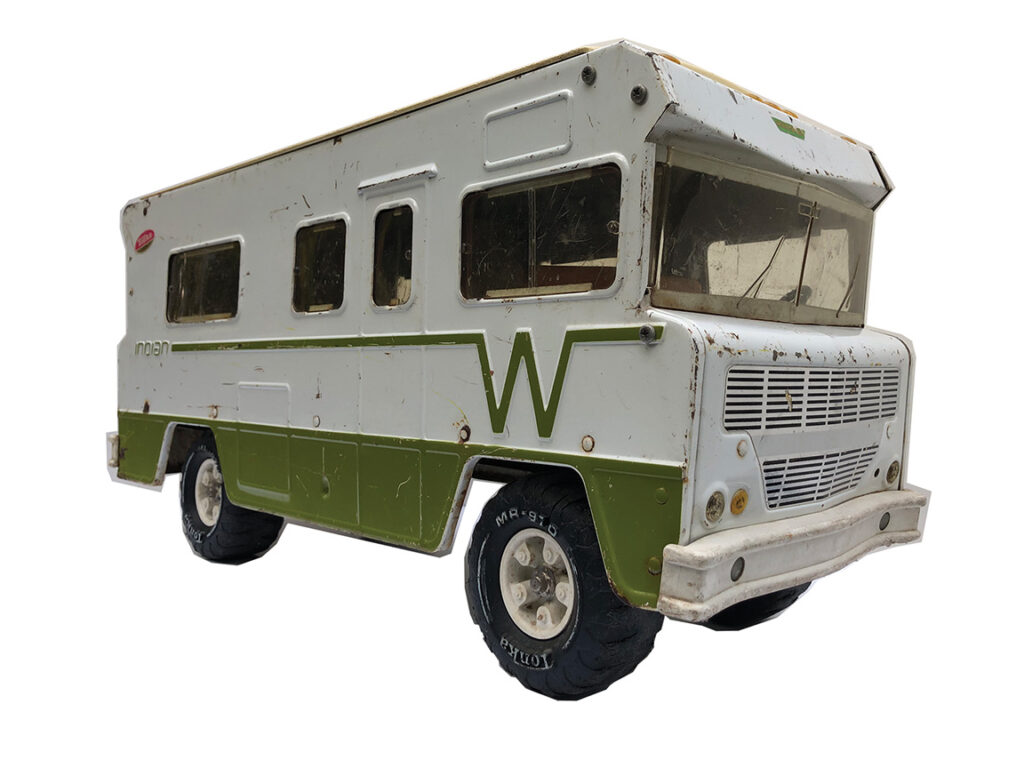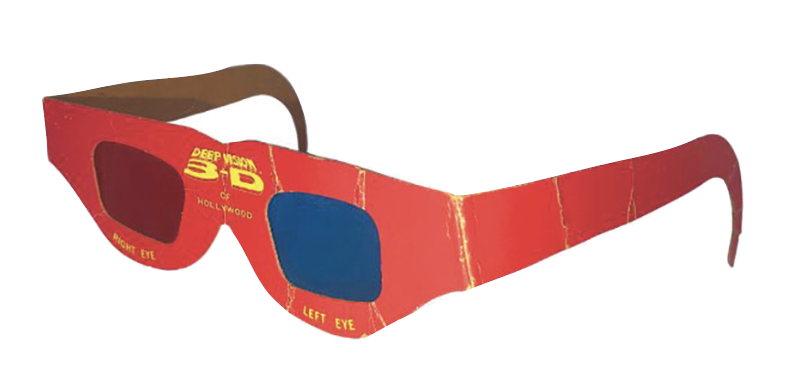
Any time of the year, indoors or out, the kids will be “happy campers” playing with this scale model motor home.
Replicating the popular Winnebago Indian, Tonka Toys of Mound, Minn., first introduced this 22-inch, 13-pound all-steel toy in 1973. The all-plastic interior also replicated the Indian model’s comfortable features with two swivel bucket seats, dinette, kitchen – the refrigerator door would open and close – and bathroom with a sliding door. The plastic cover could be lifted back to access the interior then also serve as an awning for the motor home when parked.
While kids would surely create campers out of any small doll or figures, this model included two six-inch jointed figures with fabric clothing, named Win and Winnie, along with a plastic dog named Scamp. Tonka also replicated other Winnebago models, such as the camper van named the Mini Winnie.
Winnebago Industries had its beginnings in 1958 when avid camper and businessman John Hanson (1913-1996) began selling travel trailers for another company. As a job creation program for Forest City, Iowa, the first travel trailer bearing the Winnebago label appeared in 1961; the company’s name was taken from the Winnebago River that runs through the town.
In 1966, Winnebago introduced its first motor home, the F-19, a 19-footer built on a Dodge chassis. By 1968, the Winnebago line produced five styles of motorhomes and seven types of travel trailers.
Model numbers were dropped in favor of model names in 1970, with the introduction of the “Brave,” followed by the “Indian” and the logo that’s known as the Flying “W” that also served as decoration.
Tonka’s Winnebago Indian was introduced in the Sears Christmas catalog, priced at $13.99. The following year it was featured in the Montgomery Wards catalog at $17.99.


















